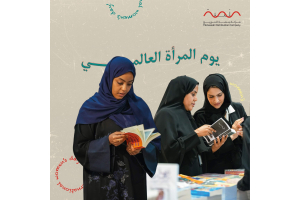One Thousand and One Nights, or more popularly known as Arabian Nights, is a collection of Middle Eastern and South Asian folktales which was brought together in Arabic during the Islamic Golden Age. One Thousand and One Nights is a prime example of the rich and varied literary production during this time, which ranged from the seventh to the twelfth centuries, when most of the Arabic-speaking world saw a scientific, economic, and cultural boom.
The Arabian Nights' Entertainment was the title of the first English-language version (1706), which gave rise to the name Arabian Nights. Over many centuries, writers, translators, and academics from West, Central, South Asia, and North Africa assembled the book itself. The first frame story of the ruler Shehryar and his wife Scheherazade is shared by all of the diverse and numerous tales.
One day, King Shehryar uncovers that his wife has been unfaithful. As a result, he has her killed. But he comes to the conclusion that all women are the same in his resentment and anguish. Before she gets a chance to dishonour him, Shehryar proceeds to marry a succession of virgins, only to have them all put to death the next morning. Eventually, the vizier who is tasked with finding them runs out of virgins. Daughter of the vizier, Scheherazade, offers to be the next bride, and her father grudgingly accepts. Scheherazade tells the King a story on the eve of their nuptials, but she leaves it unfinished. As a result, the King is compelled to put the death of the woman on hold so he can hear how the tale concludes.
The King delays her execution once more the following night because as soon as she concludes one story, she immediately starts (and only begins) another. He is eager to hear the ending. This continues for 1,001 nights.
A Medley of Beliefs and Conceptualizations
The ends of the many variations vary and are all intricately written. In some, Scheherazade begs for forgiveness; in others, the King sees his children and decides not to have his wife put to death; in yet others, incidents take place that cause the King to become preoccupied; in all cases, the king grants his wife a pardon and spares her life. The storytellers of the tales rely on the novel literary devices used in The One Thousand and One Nights and its different tales to heighten drama and tension. It is one of the first instances of "embedded tales," which have their roots in previous Persian and Indian storytelling traditions.
The stories in the collection are incredibly diverse. They contain poems, burlesques, historical stories, love stories, comedies, tragedies, and numerous erotica genres. Numerous tales feature genuine persons and geographical locations alongside ghouls, apes, sorcerers, magicians, and legendary locations. The narrator's definition of a cliff-hanger seems broader than those used in contemporary literature. While stories are frequently ended with the protagonist facing certain death or other grave danger, Scheherazade occasionally interrupts her narrator in the middle of an explanation of abstract philosophical ideas or intricate aspects of Islamic philosophy, and once while giving a thorough account of human anatomy, according to Galen. She was right to think that the King's interest in the sequel would grant her an extra day of life in each of these scenarios. Even though they are almost certainly authentic Middle Eastern folktales, some of the tales that are frequently associated with The Nights, such as "Aladdin's Wonderful Lamp," "Ali Baba and the Forty Thieves," and "The Seven Voyages of Sinbad the Sailor," were not included in the collection in its original Arabic versions but were instead added by Antoine Galland (1646–1715) and other European translators.
The History of Arabian Nights
Modern historians have made numerous attempts to sort through the immensely convoluted history of the 'Nights' in an effort to understand how the collection came to be. The majority of academics concur that it was a composite composition that originated in India and Persia. These stories were eventually translated into Arabic under the name Alf Layla, or "The Thousand Nights," at some point (perhaps in the early eighth century). The original body of tales was probably relatively limited, and in the ninth and tenth century, Arabic tales were added to it. As the tales travelled through Syria and Egypt, previously independent sagas and story cycles may have been added later; many of them displaying a preoccupation with sex, magic, or low life.
Antoine Galland translated the Arabic text of the Syrian recension into French for the first European edition (1704–1717). Les Mille et Une Nuits, Contes Arabes Traduits En Francais, is a twelve-volume collection that contains numerous tales that were not present in the Arabic source. He said that a Syrian Christian storyteller from Aleppo and a Maronite scholar named "Hanna Diab" told him about them. The book quickly became a best-seller across all of Europe, and many other translations followed.
Scholars naturally resorted to the longer passages of the Egyptian recension as they searched for the purportedly "full" and "original" form of the Nights; this recension quickly became known as the "standard version." The original translations of this kind, including those by Edward Lane (1840, 1859), were bungled. The Book of the Thousand Nights and One Night (1882, nine volumes) by John Payne and The Book of the Thousand Nights and a Night by Sir Richard Francis Burton were both unabridged and unexpurgated translations (1885, ten volumes).
The Bulaq Press in Cairo released the first, final, and comprehensive printed edition of the Arabic language in 1835. The Bulaq edition was produced by the "first Muslim printing press in the Arab world" and represents “the last decisive act in the textual history.” To this day, every edition and translation has been based on this text, which was released by the Bulaq Press. Ulrich Marzolph, an expert on the Arabian Night, claims that after a thousand years of oral and manuscript tradition, during which the corpus was constantly susceptible to change, it was this edition that "put an end to the growth of the work's Arabic text." While there are many translations and editions of the Arabian Nights in the Library of Congress's collections in a variety of languages, it is important to note that a copy of this definitive Bulaq edition of the Arabian Nights was recently added to the collection and is now accessible in the African and Middle Eastern Reading Room.















